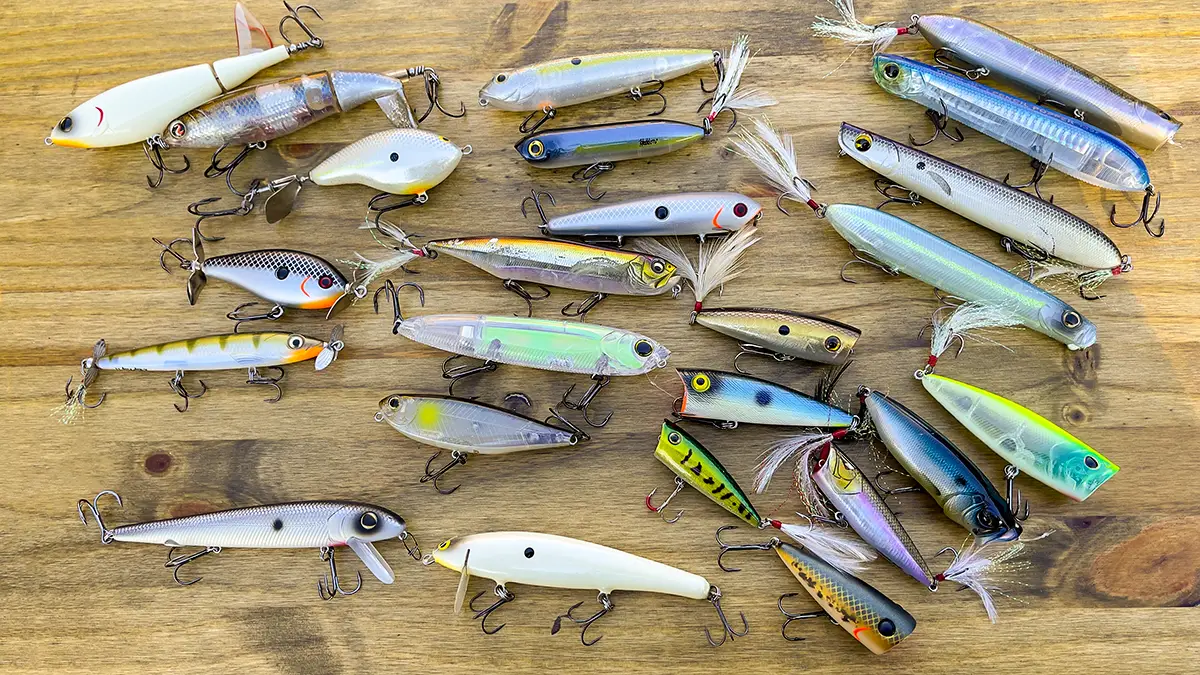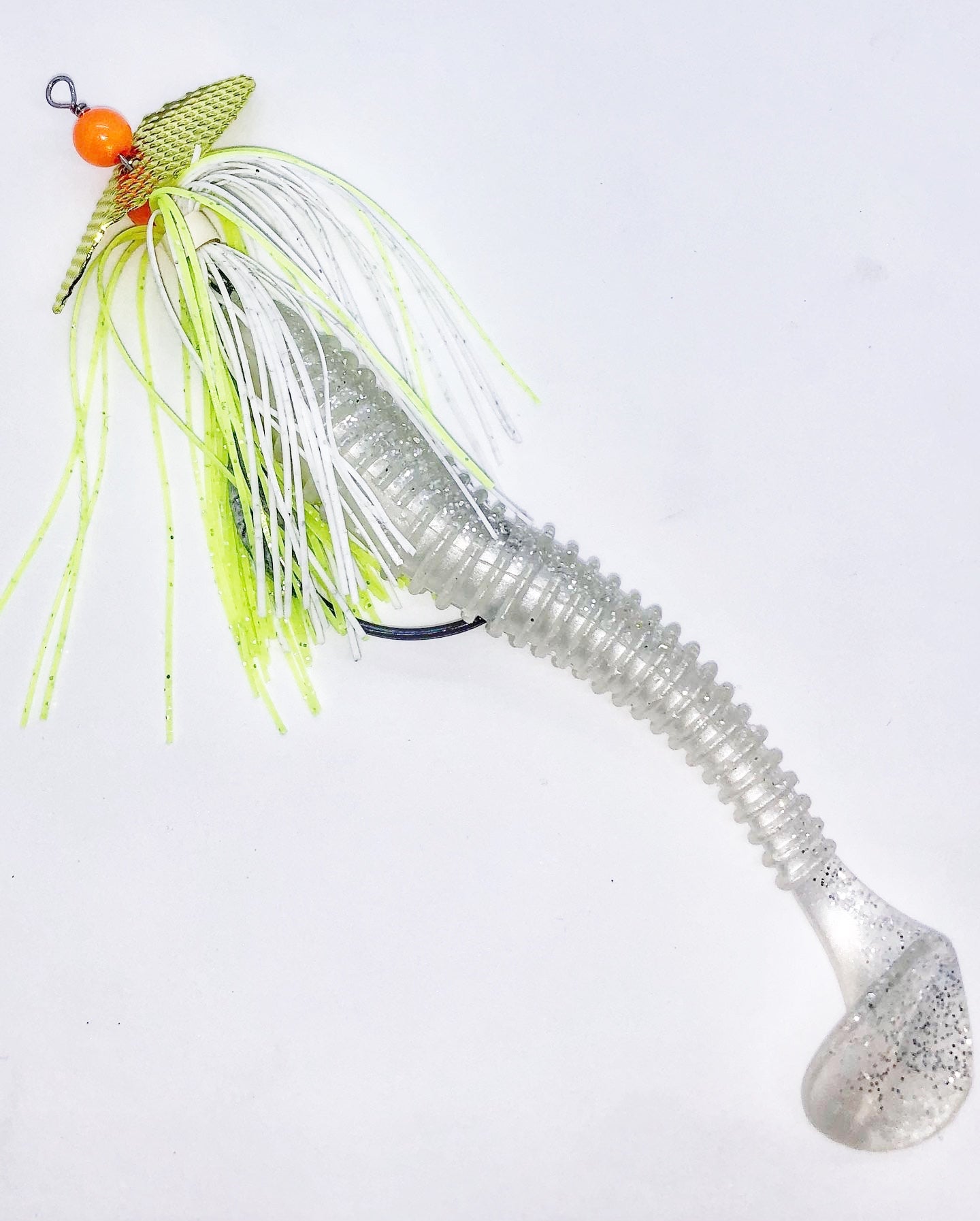The Role of Water Temperature in Choosing Bass Fishing Lures
Discover the most effective Techniques for Selecting Bass Lures for Your Next Fishing Trip
Choosing the appropriate bass Lures can considerably influence angling success. Anglers have to consider different aspects, such as seasonal patterns and water clearness. Comprehending bass actions is essential (Bass Lures). Choosing Lures that simulate natural prey can bring about much better results. Yet, lots of are unclear about the very best strategies to implement. What methods should one focus on to boost their fishing experience? The solutions lie in taking a look at details problems and adapting appropriately
Understanding Bass Actions and Environment
Understanding the nuances of bass behavior and habitat is vital for any kind of fishermen aiming to boost their fishing success. Bass are often discovered in different atmospheres, consisting of storage tanks, rivers, and lakes, where they look for structure such as submerged rocks, plant life, and fallen trees. Their behavior is heavily affected by water temperature level, light degrees, and offered forage.
Throughout warmer months, bass tend to be a lot more energetic, typically occupying shallower waters, while in colder months, they pull away to deeper areas. Furthermore, bass show patterns of feeding, typically being more aggressive during dawn and dusk. They are opportunistic predators, victimizing smaller fish, pests, and crustaceans. Comprehending these variables can assist anglers identify prime fishing areas, in addition to the most effective times to fish. Identifying bass behavior in connection to their environment is crucial for effective fishing, leading fishermens in making educated decisions about where to cast their lines.
Matching Lures to Seasonal Issues
As anglers adapt their methods to altering periods, matching Lures to seasonal problems comes to be a critical method for improving angling success. In spring, when bass are arising from wintertime dormancy, fishermens commonly use spinnerbaits and shallow-running crankbaits to resemble the motions of target. Summer requires a shift to topwater Lures or soft plastic worms, as bass seek color and cooler waters. During the autumn, when bass are fattening up before winter months, larger Lures that copy baitfish can be effective. Winter season calls for an extra refined strategy; jigs and slow-moving finesse lures commonly produce far better results as bass come to be inactive. Comprehending these seasonal patterns helps anglers pick the ideal lures, consequently raising their possibilities of a successful catch. By lining up lure selections with the all-natural actions of bass throughout the year, fishermens can optimize their fishing experience and enhance their total success on the water.
The Relevance of Shade Option
Shade selection plays a vital role in bass angling, as it can substantially impact a fisher's success. Factors such as water clearness, seasonal adjustments, and the certain choices of various bass species all affect which colors are most efficient. Recognizing these aspects allows fishermens to make educated options that improve their fishing experience.
Water Clearness Factors To Consider
When the water clarity differs, choosing the ideal bass appeal color becomes vital for bring in fish. In clear water, all-natural colors such as shad or bluegill patterns often tend to be a lot more efficient, as they resemble the victim bass are accustomed to seeing. On the other hand, in murky or stained water, brighter colors like chartreuse or fire tiger can enhance presence, making it much easier for bass to find the attraction. The comparison between the lure and the surrounding environment plays a considerable function in angling success. Fishermens ought to also consider the moment of day; lighter colors might work better in brilliant sunlight, while darker shades can be more effective during low-light problems. Adapting appeal color to water quality enhances the opportunities of a successful catch.
Seasonal Shade Patterns
How do seasonal adjustments impact bass behavior and appeal effectiveness? As temperature levels shift throughout the year, bass change their feeding practices and liked habitats, making color option vital for successful fishing. In spring, when bass generate, intense colors like chartreuse can attract attention. Summer season typically ask for more all-natural colors, such as eco-friendly pumpkin or shad patterns, as bass seek to assimilate with their surroundings. Throughout fall, vivid colors like orange and red mimic the changing foliage, enticing bass as they plan for winter season. In winter season, restrained tones such as white or gray may be extra reliable, as bass become sluggish. Ultimately, understanding seasonal shade patterns allows anglers to choose Lures that resonate with bass's present behavior, improving their possibilities of success.

Species-Specific Preferences
Understanding species-specific choices is vital for anglers looking to optimize their lure choice. Different bass species, such as largemouth and smallmouth, display unique color preferences based on their environment and feeding behaviors. Largemouth bass often favor darker hues, particularly in murky waters, where colors like black and dark environment-friendly simulate all-natural victim. On the other hand, smallmouth bass are most likely to respond to brighter shades, such as chartreuse and orange, particularly in clear waters. Additionally, water clarity and light conditions can affect these preferences, making it essential for anglers to adapt their appeal color accordingly. By considering these see this species-specific choices, anglers can raise their opportunities of a successful fishing expedition, inevitably boosting their total experience on the water.
Selecting the Right Entice Kind for Different Circumstances
Choosing the proper appeal type for numerous fishing situations is crucial for success on the water. Fishermens have to consider elements such as water quality, climate problems, and the bass's feeding routines. For murky water, darker-colored appeals, such as spinnerbaits or jigs, can be reliable, as they produce a strong silhouette. In clear water, natural-colored Lures like soft plastics or topwater lures might tempt careful bass.
When fishing in heavy cover, utilizing heavy jigs or weedless gears can assist browse via challenges without snagging. Conversely, open water scenarios may take advantage of crankbaits or swimbaits that can cover better distances. Additionally, throughout cooler months, slower-moving Lures often tend to be more efficient, while warmer conditions might require faster retrieves. By adapting attraction options to certain atmospheres, anglers enhance their opportunities of an effective catch.
Try out Size and Action

Anglers often experiment with a series of dimensions and activities to identify what jobs best under varying conditions. A slow, subtle activity might be optimal in colder water, while a quick, hostile recover could be a lot more reliable in warmer temperature levels. By carefully observing the bass's reactions to these variations, anglers can improve their strategy and raise their possibilities of a successful catch. Inevitably, the ideal mix of dimension and action can make a significant distinction on the water.
Checking Out Water Problems for Better Entice Choices
Understanding water problems is vital for choosing the ideal bass appeal. Factors such as water quality and temperature level can substantially affect fish actions and feeding patterns. By analyzing these problems, fishermens can make educated decisions that boost their possibilities of an effective catch.
Evaluating Water Clearness
How does water quality influence the effectiveness of bass appeals? Water clarity dramatically affects bass behavior and the presence of appeals. In clear water, bass often tend to be extra mindful, making natural-colored Lures extra efficient as they imitate victim closely. Anglers may pick continue reading this lighter, subtler shades to stay clear of startling fish. Alternatively, in dirty or discolored water, better and more dynamic shades attract attention, standing out also in low visibility conditions. Additionally, the kind of appeal can vary; slower-moving Lures may function much better in clear water, while quicker, much more aggressive discussions can entice bass in murkier environments. Understanding the clearness of the water enables fishermens to select Lures that optimize their possibilities of success throughout their fishing expedition.
Comprehending Water Temperature Level
As water temperature level fluctuates, it straight influences bass actions and their feeding patterns, making it essential for fishermens to consider when picking attractions. Normally, bass like warmer temperature levels, usually between 65 ° F and 75 ° F, where their metabolic rate is heightened, leading to boosted feeding task. In cooler water, bass come to be lethargic and might choose slower-moving appeals, such as jigs or soft plastics. Conversely, during warmer months, faster discussions like crankbaits or topwater Lures can be extra efficient. Anglers ought to likewise think about seasonal adjustments; as an example, spring warming leads to aggressive feeding as bass prepare to spawn. By recognizing exactly how temperature affects bass, fishermens can make informed decisions on lure selection, considerably improving their chances of success.
Tips for Organizing and Maintaining Your Lure Collection
While many fishermens concentrate on choosing the appropriate Lures for their next angling trip, preserving a lure and organizing collection is just as crucial for boosting performance and performance. A well-structured collection allows anglers this hyperlink to promptly find the Lures they require, decreasing time spent rummaging through take on boxes.
To begin, fishermens ought to classify Lures by type-- crankbaits, jigs, or soft plastics-- making it less complicated to locate certain options. Making use of take on trays or boxes with adjustable areas can assist keep whatever arranged. Identifying containers simplifies the procedure further, assisting quick recognition.
Normal maintenance is additionally crucial; fishermens need to check Lures for signs of wear, such as rusted hooks or damaged paint, and change them as necessary. Cleaning Lures after each trip avoids wear and tear and makes certain durability. By implementing these business and maintenance techniques, anglers can boost their angling experience and guarantee their Lures are always in ideal problem.
Regularly Asked Inquiries
What Are the very best Brand Names for Bass Lures?
The most effective brands for bass Lures consist of Rapala, Strike King, and Berkley. These brand names are renowned for their advancement, efficiency, and top quality, interesting both amateur and skilled anglers looking for effective fishing experiences.
The Amount Of Lures Should I Tackle a Trip?
A typical fishing expedition should consist of around 5 to 10 attractions, enabling for flexibility while staying clear of clutter. This choice needs to include various kinds and shades to adjust to changing conditions and fish preferences.
Can I Make My Very Own Bass Lures?
Yes, people can make their very own bass Lures utilizing numerous materials and methods - Best Bass Lures South Africa. Crafting Lures enables customization, allowing fishermens to trying out colors, forms, and dimensions to fit details angling problems and preferences
What's the Average Life Expectancy of a Bass Draw?
The typical lifespan of a bass lure differs, generally lasting from a couple of months to several years, depending on worldly top quality, use frequency, and ecological problems. Appropriate treatment can considerably prolong a lure's use.
Exist Certain Lures for Evening Fishing?
Yes, there specify Lures created for evening fishing. Dark shades and Lures that generate vibrations, such as spinnerbaits or jigs, usually attract bass in low-light conditions, boosting visibility and activating predative instincts.
Conversely, in murky or tarnished water, brighter shades like chartreuse or fire tiger can enhance exposure, making it easier for bass to discover the attraction. Bigger Lures can attract larger bass, while smaller Lures might be more effective for catching smaller fish. In addition, the kind of appeal can differ; slower-moving Lures might function better in clear water, while much faster, much more hostile presentations can entice bass in murkier settings. As water temperature level varies, it straight influences bass actions and their feeding patterns, making it crucial for anglers to take into consideration when selecting appeals. While numerous fishermens focus on picking the appropriate Lures for their next angling trip, arranging and maintaining an appeal collection is similarly important for improving performance and efficiency.